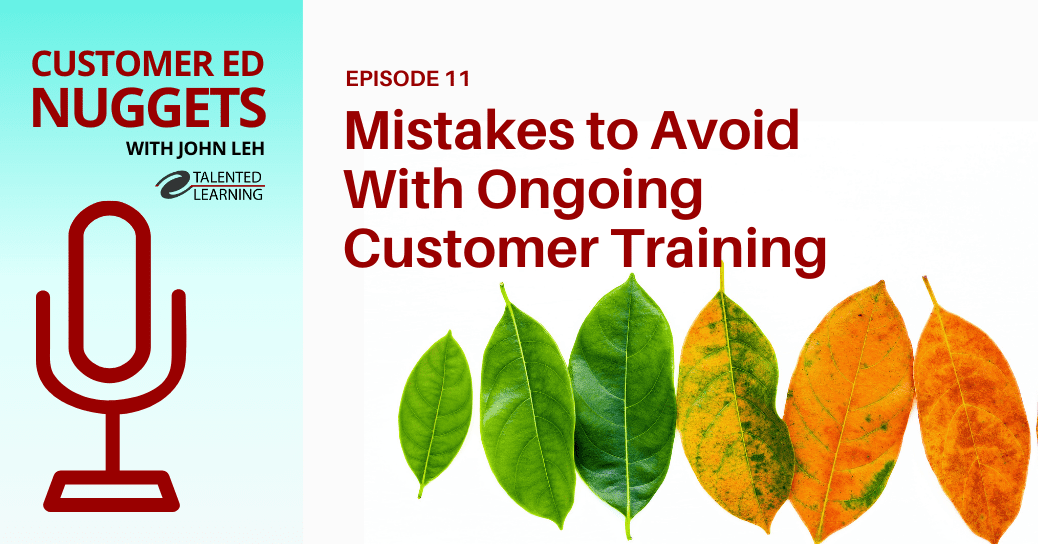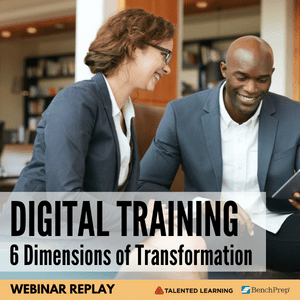
You may know me as an independent learning systems consultant. But I’m also a recovering LMS sales guy. Six years ago I pivoted after 14 years on the front lines with two major commercial LMS vendors. I learned a lot during those years. I also developed some strong opinions. And frankly, several of those biases deserve a second look in light of today’s market. Open source software is a great example. 10 years ago we would occasionally cross paths with corporate LMS buyers who were evaluating commercial systems side-by-side with open source platforms. We’d snicker and say, “If you’re considering both types of systems, one of us is in the wrong place – and it’s probably us!”
Sounds smug. It was. But we were trained to believe that if any corporation expressed interest in an open source LMS, the buyer was probably uninformed, unserious, seeking a cheap fix or some combination of those. Times have changed.
Early open source learning systems were viable for academic applications. But corporations found it difficult to shoehorn open source into their infrastructure – especially for extended enterprise learning. Now, there are multiple reasons to seriously consider open source for corporate extended enterprise needs. To learn more, let’s dig deeper…
What is Corporate Extended Enterprise Learning, Anyway?
“Corporate extended enterprise learning” is essentially any instructional program a business offers to non-employee audiences. That can include any combination of:
- Customers and prospects
- Sales channel partners, distributors and retailers
- Franchisees
- Suppliers and developers
- Contractors
- The general public
Sometimes corporations deploy a single extended enterprise LMS to serve external audiences and employees, alike. But more often, multiple learning systems are deployed over time, to support various audiences and business initiatives. This is particularly common when an organization’s structure and decision-making are decentralized.
5 Defining Extended Enterprise Attributes
Although extended enterprise learning initiatives are all different, they share important common ground, especially these characteristics:
1) Voluntary Learners – Because extended enterprise learners aren’t employees, you can’t force them to use your LMS. Instead, you need to invest extra effort to attract, engage and retain participants.
Companies often consider extended enterprise education an opportunity for brand differentiation, so they try to out-perform others by continuously improving the learning experience.
2) Audience Size – Only a few hundred corporations in the world have more than 100,000 employees to train. On the other hand, tens of thousands of organizations serve more than 100,000 external learners. (Vendors: Read that market size statistic again and let it sink in.)
Because extended enterprise audiences are potentially vast and variable, buyers need a scalable licensing structure.
3) Extensive Integrations – Employee-focused learning systems integrate with HRIS platforms and single sign-on software. But extended enterprise deployments typically integrate with numerous other systems and tools, including customer relationship management, marketing automation, ecommerce, content management, customer support and more.
4) Measurability – Because extended enterprise learning programs are driven by specific business objectives, metrics are integral to their success. To prove the impact of learning, organizations need to tie educational experiences to sales, revenue, customer satisfaction, time-to-value and countless other metrics.
This means that robust analytics capabilities are vital. It also means that buyers often develop a business case to justify their LMS purchase.
5) Business-Specific Expertise – Extended enterprise LMS buyers want to buy from vendors who understand the domain and have a roster of successful clients with similar use cases. This assures them that the system is viable and the roadmap will remain focused on extended enterprise needs, going forward.
Using these requirements (and others) as a baseline, hundreds of vendors are now actively competing to claim a slice of this extended enterprise LMS market opportunity.
Historically, commercial software vendors dominated this segment. But increasingly, open source learning systems are making noteworthy inroads – and with good reason.
How Well Do Open Source Learning Systems Meet Extended Enterprise Needs?
Is open source right for every extended enterprise application? No. Do open platforms offer advantages over commercial systems? Certainly – sometimes.
Let’s look at how open source learning platforms stack up, based on the extended enterprise attributes we outlined above:
1) Voluntary Learners – Open source solutions are highly configurable at the user interface level, with thousands of community-built plugins. This gives organizations the flexibility to create “one-of-a-kind” applications that appeal to specific users in ways that many commercial providers can’t match.
2) Audience Size – Core open source LMS licensing costs are zero (or minimal). Because corporations invest much less in licensing, they can invest much more in educational content, learner experience optimization, systems integration and program marketing.
3) Extensive Integrations – Open source LMSs offer strong APIs and pre-built connectors to a diverse array of other applications. This is ideal for organizations that want to enhance and extend their LMS by easily snapping it into a broader, more complex business technology ecosystem.
4) Measurability – Open source solutions have robust reporting capabilities that support a variety of extended enterprise use cases. Third-party plug-ins add more extensive business-focused analytics for organizations with specialized measurement needs.
5) Business-Specific Expertise – Open source learning systems are configured, deployed and maintained by third-party service providers. Since there are no license revenues, these organizations compete by adding value through the quality of their services. Many are extended enterprise experts with a strong track record.
Open Source vs. Commercial Learning Systems: What’s the Difference?
Don’t commercial and open source LMSs solve the same challenges? Yes, they do – but differently.
In fact, for any given extended enterprise scenario, open source approaches can yield substantially more business value. That’s why open-source LMSs should be included in the evaluation process.
Here are some key differences that can swing buying decisions in one direction or another:
Cost
At lower audience levels (for example, 1,000 or 10,000 learners per year), open source and commercial software costs are comparable. But as the number of learners increases (especially at 50,000-100,000 learners per year or more), the total cost of ownership for an open source LMS is always significantly lower than a commercial solution.
Custom Needs
Generally, it’s wise to avoid customization unless you have no other choice.
Commercial solutions are configurable – meaning buyers can adjust LMS functionality only with predetermined settings provided by the vendor. (Think of checkboxes with multiple options.) Beyond that, modifications are available only as core product features in a future product release. In other words, one-off customer changes (customizations) aren’t part of the commercial software playbook.
In contrast, open source solutions are fully customizable, with all the related advantages and disadvantages (such as the burden of ongoing technical and maintenance costs). Although customization isn’t advisable for small-scale projects, it can be useful for large, strategically important deployments.
Service Requirements
With commercial systems, buyers are generally responsible for configuration and deployment, with vendors providing only minor proactive or reactive help. Large employee-focused LMS vendors can provide more hands-on professional service, but this comes at a steep incremental cost beyond license fees.
In contrast, open source solutions are typically configured and deployed by providers that offer clients whatever level of attention they want and need. Because LMS licensing comes at no/low cost, nearly every budget can afford a service provider.
Simple Core Requirements
Many extended enterprise LMS clients are buying for the first or second time. Their needs aren’t complicated – yet.
These buyers are usually happy to structure their training business to conform to the capabilities of their chosen LMS. And they usually prefer commercial solutions.
My opinion? The more extensive and complex your LMS requirements are, the more attractive open source becomes.
Top Open Source LMS Platforms
Multiple open-source learning systems are available. These are the most notable choices for extended enterprise applications:
Moodle – The most popular LMS in the world, Moodle boasts over 175 million users across 100,000 deployments. Originally built with academic needs in mind, Moodle has been expanding into corporate and continuing education environments.
Totara – Built as an independent fork of the Moodle code base, Totara was originally designed specifically for workplace learning. In recent years, Totara has expanded rapidly into the extended enterprise space, with applications for associations, non-profit organizations, government entities as well as businesses.
Moodle Workplace – Introduced earlier in 2019, this platform is Moodle’s new answer to Totara’s success in the corporate learning market. Moodle Workplace looks promising, with multi-tenant support and other functionality that makes it a viable contender for corporate extended enterprise implementations.
Open edX – This massively scalable open authoring tool and LMS comes with its own large, supportive community. It is built on the same platform that powers edX.org‘s popular online courses. This system is used extensively in higher education and employee training, and is now making inroads in the extended enterprise space.
Open Source Service Providers
Independent professional services providers are critical to the success of open source LMS platforms. Hundreds and hundreds of open source development specialists operate today, representing every geographic location and extended enterprise use case you can imagine.
I’ve personally worked with a variety of these organizations, including eThink Education, Extension Engine, Kineo, MindQuest Learning, Raytheon Professional Services, Remote Learner and Synegen. Each brings unique strengths to the table.
Which Commercial LMS Platforms Compare?
On the commercial side of the corporate extended enterprise space, you’ll find no lack of options. The companies listed below are just a taste of the vendors worth considering:
Extended Enterprise Specialists
These are pure extended enterprise solutions, designed exclusively to support external audiences. For example, BlueVolt, NetExam, Learndot, Skilljar and Thought Industries.
Cloud LMS Vendors
Easy to procure, deploy and maintain, cloud LMSs are a good choice for serving extended enterprise audiences, employees or a combination of learner types. Popular examples include Absorb, Docebo and SAP Litmos.
Employee-Focused LMS Vendors
These are big, well-known platforms that focus primarily on employee onboarding and compliance training. But these systems are also able to support large-scale, global extended enterprise initiatives. Recognized names in this group include Cornerstone, Saba and SumTotal.
Conclusion
As a new decade begins in 2020, some representatives from commercial LMS providers may still be holding their noses when they talk about open source.
But those vendors aren’t blind. They see how the market is shifting and they know just how powerful open source competitors can be in the right situation.
Large-scale, high-stakes extended enterprise education is certainly one of those scenarios. And as more organizations find success with open source learning solutions, the extended enterprise door is ready to swing open, even wider.
Thanks for reading!
Share This Post
Related Posts
The Future of Customer Education: Customer Ed Nugget 16
Customer education is rapidly evolving as organizations embrace new strategies and tech. What does this mean for the future of customer education? See what experts say on this Customer Ed Nuggets episode
Education Strategy Mistakes to Avoid: Customer Ed Nugget 15
What does it take to deliver a successful customer education program? It starts with a solid education strategy. Learn how to avoid common pitfalls on this Customer Ed Nuggets episode
Which LMS is Best for You? New Shortlisting Tool for 2024
How can you find the best learning system for your business? Our LMS shortlisting tool can help. Learn about the 2024 RightFit Solution Grid. Free, reliable guidance based on our independent research
How to Build a Learning-Based Business: Executive Q&A Notes
Building and selling online courses may seem easy, but building a profitable learning-based business is far more complex. Find out what successful leaders say about running this kind of business
The Rewards of Community Building: Customer Ed Nugget 14
What role does community play in your customer relationships? Find out why community building is such a powerful force in customer education on this Customer Ed Nuggets episode
Benefits of Training Content Syndication: Customer Ed Nugget 13
If you educate customers online, why should you consider content syndication? Discover 10 compelling business benefits in this Customer Ed Nuggets episode
Top Marketing Skills to Master: Customer Ed Nugget 12
Successful customer education programs depend on professionals with expertise in multiple disciplines. Which marketing skills lead to the best results?
How to Measure and Improve Partner Training ROI
An educated channel is a successful channel. But how do you know if your educational programs are effective? Learn from an expert how to evaluate partner training ROI
Mistakes in Ongoing Customer Training: Customer Ed Nugget 11
Customer education doesn't stop with onboarding. It pays to invest in ongoing customer training. Learn which mistakes to avoid in this Customer Ed Nuggets episode














FOLLOW US ON SOCIAL